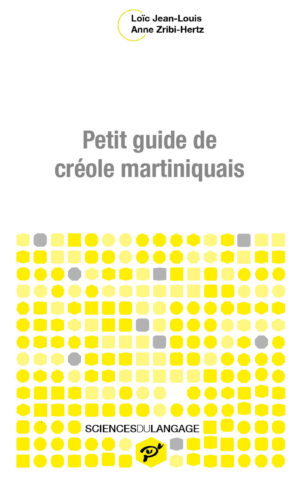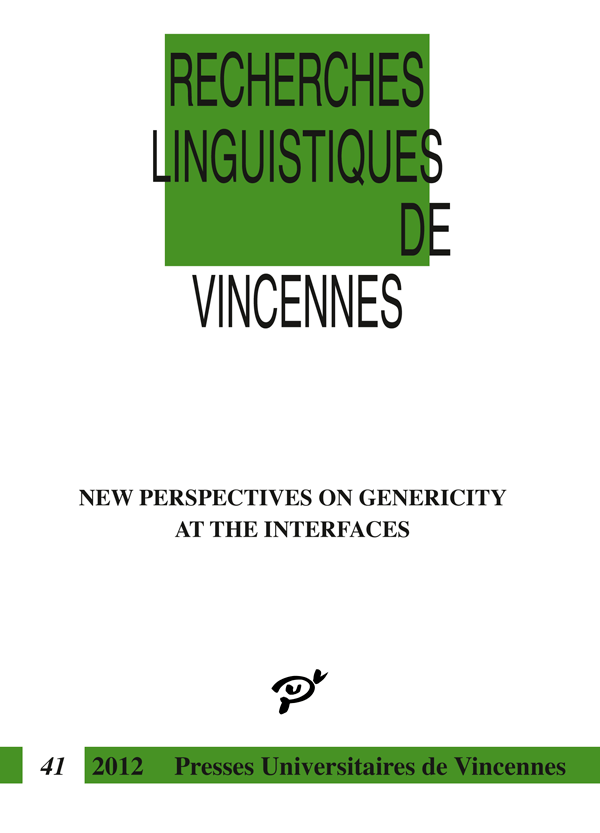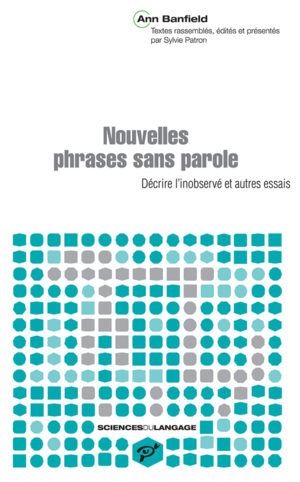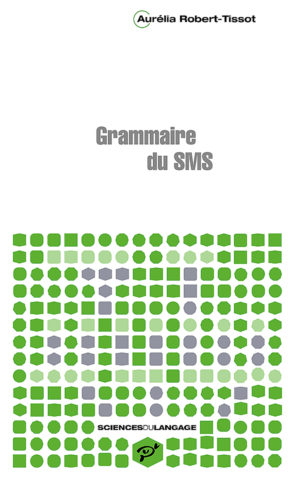James Hampton
Generics as reflecting conceptual knowledge
Nous proposons que les génériques reflètent la nature du système conceptuel, qui, par ses structures prototypiques et ses frontières vagues, déstabilise les traitements logiques traditionnels. Les représentations conceptuelles contiennent les informations que l’on considère pertinentes et appropriées pour comprendre et se familiariser avec le concept en question. Ces informations incluent des traits fondamentaux et ontologiques, ainsi que des informations sur la forme ordinaire ou typique que peuvent prendre les exemplaires du concept, et tout autre information qu’il est important de connaître. Nous utilisons des exemples de la littérature de psychologie pour illustrer la relation qui existe entre les génériques et les erreurs de raisonnement qui peuvent se produire à cause de la dépendance des concepts liés à la notion de similitude. Afin de comprendre la logique des génériques, nous devrions donc nous intéresser aux processus par lesquels les information s’attachent et s’intègrent à la représentation d’un concept.
Sarah-Jane Leslie
Generics articulate default generalizations
Les phrases génériques expriment des généralisations sur les espèces, comme « les tigres ont des rayures », « les canards pondent des œufs », « les tiques transmettent la borréliose ». Je présente et examine de nouvelles données d’adultes et d’enfants qui suggèrent que les génériques expriment des généralisations cognitivement par défaut – c’est-à-dire qu’ils expriment sur les espèces des généralisations basiques et précoces du point de vue du développement. Au contraire, les énoncés quantifiés expriment des généralisations cognitivement plus élaborées et ardues. D’autres données suggèrent que les généralisations génériques ne dépendent pas uniquement de la prévalence. Ces généralisations fondamentales sont plutôt sensibles à un certain nombre de facteurs liés au contenu, comme la possibilité que la propriété en question soit dangereuse ou bien surprenante, ou qu’elle est une propriété essentielle et caractéristique de l’espèce. Cela suggère que notre moyen le plus basique de former des généralisation inductives est sensible à des facteurs sémantiques riches.
Sandeep Prasada
Mechanisms for characterizing kinds and classes
Cet article examine brièvement les recherches récentes relatives aux mécanismes conceptuels qui nous permettent de représenter les connaissances génériques qui sous-tendent et contraignent le langage générique. Il apparaît que nos systèmes conceptuels fournissent du manière formellement distinctes de représenter les multiplicités – en tant qu’espèces et en tant que classes. Les espèces s’expriment via des catégories nominales alors que les classes s’expriment via des syntagmes nominaux. Par ailleurs, alors que les espèces peuvent être caractérisées par des connexions de sens, des connexions statistiques et des connexions causales, les classes peut être caractérisées seulement par ces deux dernières. Nous proposons que les espèces sont représentées via un mécanisme génératif qui est, en principe, capable de générer une infinité dénombrable de représentations. Nous proposons également que la distinction entre espèces et classes rend compte des phénomènes que l’on analyse habituellement en termes d’espèces bien établies ou non.
Ariel Cohen
Generics as modals
Une conception courante des génériques est qu’ils expriment une quantification universelle sur des individus normaux. Je réfute cette approche et démontre que la quantification n’est ni universelle ni sur des individus normaux.
Concernant l’universalité, les génériques ne répondent pas aux tests standards de la quantification universelle. Je propose, comme alternative, que les génériques expriment des mesures de haute probabilité. Je formalise cette notion au moyen d’une extension modale de la logique probabiliste du premier ordre, et montre comment ce système peut rendre compte des génériques enchâssés et des inférences sur des génériques.
Quant à la normalité, je la mets en contraste avec une autre notion, celle d’uniformité : les génériques sont évalués par rapport à des mondes dont leur futur ressemble à leur passé. En utilisant les tests standards de substitution pour l’intensionnalité, je démontre que les génériques sont évalués par rapport à des mondes uniformes plutôt que normaux.
Le résultat final est qu’un générique comme Birds fly (les oiseaux volent) ne signifie pas « tous les oiseaux normaux volent » ; il signifie plutôt que la probabilité pour qu’un oiseau pris au hasard vole est élevée, et qu’il est attendu que cette tendance perdure.
Christian Retoré
Variable types for meaning assembly: a logical syntax for generic nouns phrases introduced by most
Nous proposons une manière de calculer le sens des phrases qui comportent des syntagmes nominaux génériques correspondant au quantificateur généralisé « la plupart » (most). Nous nommons ces génériques des « spécimens » ; ils s’apparentent aux stéréotypes et prototypes de la sémantique lexicale. Les sens sont conçus comme des formules logiques qui, par la suite, peuvent être interprétées dans votre modèle préféré. A cet effet, nous nous écartons de la vision frégéenne avec un seul univers non typé, et non adoptons une théorie des types qui emprunte au ε-calcul de Hilbert et la philosophie médiévale. Notre analyse en théorie des types ressemble quelque peu aux travaux actuels en sémantique lexical d’Asher, du Luo et de nous-même. Notre modèle s’applique aux exemples classiques mettant en jeu une classe, ou une élément générique de cette classe, qui n’est pas prononcée mais donnée par le contexte. Ainsi, dans le cadre minimaliste- contextualiste notre conception en théorie des types est que les termes encodent le contenu purement sémantique alors que les types sont déterminés pragmatiquement.
Alice ter Meulen
Generic in information structure
Pourquoi nous accrochons-nous aux croyances génériques qui nous servent à expliquer et comprendre le monde, même lorsqu’elles vont à l’encontre de faits ou d’observations évidentes avec lesquelles elles sont contradictoires ? Il est souvent rationnel de ne pas corriger ses croyances, même si les contre-exemples abondent, en reléguant ces derniers au statut d’exceptions anodines qui n’infirmeront pas les faits. L’étude de la structure focus/arrière-plan qui résulte de l’interaction entre les adverbes aspectuels, le temps et les pluriels nus nécessite une interface de tous les modules de la grammaire – la Structure Informationnelle – dans laquelle le contenu des énoncés avec pluriels nus peut être déterminé en contexte, et dans laquelle sont expliquées les différences épistémologiques entre exceptions et contre-exemples. Les informations génériques persistent dans les situations récalcitrantes parce que leur force explicative est « immunisée » contre les preuves contraires. Cette « immunisation » de l’information est un nouveau concept sémantique théorique dont nous précisons le contenu dans une sémantique des génériques qui emprunte à l’épistémologie.
Olga Borik and Teresa Espinal
On definite kinds
Dans cet article, nous défendons trois hypothèses. Premièrement, toutes les langues qui possèdent des déterminants (nuls ou manifestes) ont des termes d’espèces définis, une possibilité qui n’empêche pas les langues de recourir à d’autres moyens pour faire référence aux espèces. Deuxièmement, les espèces sont dénotées par des DPs définis sans Nombre. Troisièmement, l’interprétation de sous-espèces se fait sur Nombre. Nous soutiendrons empiriquement ces hypothèses en nous appuyant sur l’analyse contrastive de deux langues qui mettent en œuvre des stratégies opposées pour marquer la définitude : l’espagnol, une langue romane avec articles, et le russe, une langue slave sans article. Nous faisons la prédiction que les termes d’espèces définis ne peuvent pas se combiner avec des prédicats qui encode la pluralité, ne peuvent pas déclencher une interprétation générique avec des prédicats s-level, et ont une interprétation différente de celle associée aux définis pluriels.
Alda Mari
A note on generic quantification and the ontology of twins and bikinis
Les phrase génériques avec indéfinis pluriels en français ont une distribution très limitée. En particulier, en l’absence de modifieurs nominaux, de modaux ou de prosodie contrastive, l’ensemble des prédicats nominaux qui peuvent apparaître en position sujet ne comprend que les prédicats dits intrinsèquement pluriels comme jumeaux. Les prédicats « sortaux » pluriels comme carrés sont exclus, sauf s’ils sont modifiés. Cet article renforce l’hypothèse que les énoncés génériques indéfinis sont quantificationnels (contrairement aux énoncés définis pluriels en français) et que la quantification nécessite une « individuation ». Il s’efforce d’expliquer pourquoi jumeaux dénote un individu pluriel alors que ce n’est pas le cas de carrés. Il examine différentes approches qui utilisent des outils extensionnels pour définir l’ontologie des entités dénotées par les prédicats intrinsèquement pluriels, et propose une explication fondée sur la notion intensionnelle de tout coordonné. La perspective ontologique proposée ici complète la perspective syntaxique qui conçoit jumeaux comme un prédicat réciproque.
Yael Greenberg
Genericity and (non)accidentalness
Cet article entreprend de clarifier la nature de la « law-likness » ou « non-accidentalité » qu’ expriment, selon l’opinon courante, les phrases génériques. Pour ce faire, il examine les interactions des ces phrases génériques avec une construction qui semble exprimer « l’accidentalité », à savoir la construction en happens to (comme dans John happens not to see well, fr. il se trouve que John ne voit pas bien). En particulier, il s’avère que les génériques avec un sujet pluriel nu (génériques BP, comme Dogs have four legs, fr. les chiens ont quatre pattes), mais pas les génériques avec un sujet indéfini singulier (génériques IS, comme A dog has four legs, fr. un chien a quattre pattes), sont compatibles avec cette construction (cf. Dogs happen to have four legs vs. #A dog happens to have four legs). J’analyse happens to comme un opérateur de nécessité à domaine vague, c’est-à-dire un quantificateur universel sur les mondes dont la restriction (le domaine de mondes sur lequel opère la quantification) est systématiquement vague. A la suite de Greenberg (2003, 2008), je propose qu’un certain nombre de différences distributionnelles et interprétatives entre les génériques IS et BP peuvent être attribuées au fait que bien que les deux ont la même structure semantique quantificationnelle modale de base, la restriction des mondes est nécessairement précise dans le premier type de génériques, alors qu’elle peut être vague dans le second. La compatibilité des génériques BP avec happens to est ainsi analysée comme un cas de concordance modale.
Svetlana Vogeleer
Habituals with indefinite singular objects: aspect and modality
Cette étude porte sur les habituels nus avec objets indéfinis singuliers. Le terme d’habituels nus désigne ces habituels qui ne contiennent pas d’adverbes de quantification. A partir des ces phrases, nous défendons l’idée que la classe des habituels se compose de groupes différents : les habituels quantificationnels et les habituels non quantificationnels. L’article explique ce qui distingue ces deux types, au niveau extensionnel en termes de leur interaction avec le point de vue aspectuel, et au niveau intensionnel en termes de leur composant modal respectif à l’origine de la généralisation.






